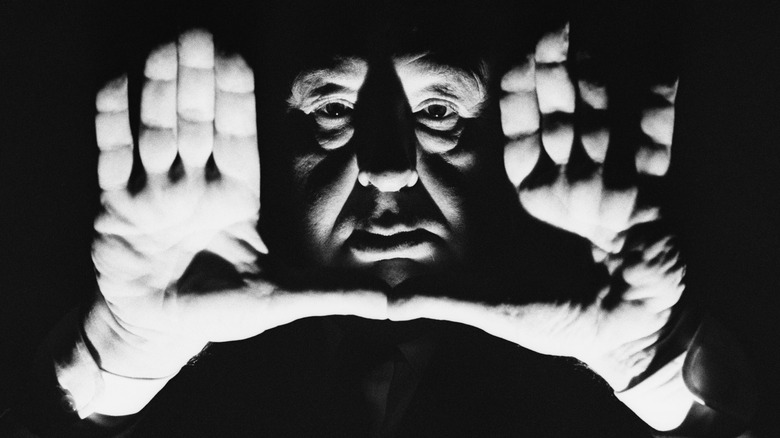The One Filmmaking Technique Alfred Hitchcock Vowed He Would Never Use
Alfred Hitchcock's inventive visual techniques serve as a guidebook for filmmakers practicing the art of suspense and anxiety. The director was and is still famous for making audiences crawl to the edge of their seats, inviting them into his films as onlookers before entrapping them in some claustrophobic web of mystery and murder. Everything in the camera lens played a role in the story for Hitchcock, which is why he had such a distaste for superfluous visuals that distracted from the central focus of a scene.
Hitchcock deliberately guided (and misguided) his audience into concentrating on specific details of a particular scene, using calculated framing to draw the eye to an important object or action that serves to move the plot forward while expressing a mood. This intense focus on visual storytelling inspired Hitchcock to draw thoroughly detailed storyboards as a way of communicating his exact specifications to his cinematographers. Suffice it to say that the director considered every aspect of a visual landscape to be essential in guiding the audience's perceptions of the events on screen.
Hitchcock's visual no-no
If Hitchcock was so obsessed with highlighting the most pertinent visual details of his stories, then it only makes sense that he would have an aversion to visual filler. The filmmaker expressed his distaste for placing objects in the foreground in an interview on "The Dick Cavett Show," originally aired on June 8, 1972, late in his career. In his usual sardonic tone of voice, Hitchcock retorts that placing a shot in a fireplace behind a roaring fire, for example, serves no greater purpose because no one would ever physically be in that position. This emphasizes Hitchcock's goal of guiding (and manipulating) his audiences in a way that makes them feel like they're sharing the same experiences as his characters. Framing a shot from inside a fire breaks that connection and reminds the viewer that they're unattached to the events in the film.
Placing objects in the foreground also distracts from those important plot details that Hitchcock likes to emphasize. He dryly and succinctly puts that logic into words when he mentions that putting a blurry pot of flowers in the foreground distractingly obstructs the scene. When Cavett mentions that Westerns often place cactus flowers in the foreground and horse-riders in the distance, Hitchcock asks, "Was it a story about a cactus flower?" That sarcastic question may best explain the filmmaker's distaste for unnecessary visual flairs. Hitchcock spoke through a visual language. If he placed his camera right in front of an irrelevant object, his storytelling would be lost in translation.
